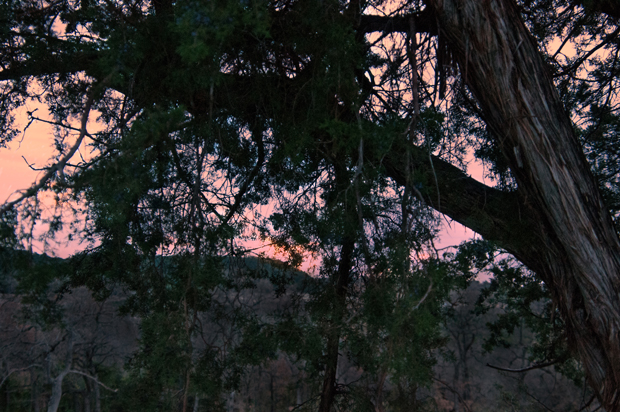Farm & Ranch
Ag Elsewhere: California

Photo and story by Lainey Smith
When I sat down with the editor of NTFR, we discussed several topics to start a new year of exploration into California Agriculture.Originally, this article would cover how farmers and ranchers were recovering from a highly active and highly destructive fire season. As I opened up my laptop to begin setting up interviews, words scrolled across my screen—The Camp Fire.
Within days, The Camp Fire uncontrollablyburned 153,336 acres and claimed 85 lives. With no prior warning, fourteenthousand homes burned and those who inhabited them lost everything. The firefront moved so fast, rescue crews abandonedevacuation procedures—there wasn’t time.
At hospitals and convalescent homes,patients were thrown into vehicles headed toward safety. As the flames subsided,this provided a new challenge—finding the survivors. Evacuations were so chaotic, and the flames burned so hot, hundreds were reported missing.
Cadaver dogs were brought in to find those who perished, while family members went on local news stations in search of missing loved ones. At the time of article submission 249 people were still missing.
The Camp Fire is being named the most destructive fire in California history. What strikes most odd is the fact that this fire occurred months past what is considered California’s “fire season.” While the cause of the fire is still under investigation, The Camp Fire is being classified as a vegetation fire, intensified by the abundance of dead, overgrown forest.
While the Camp Fire may have caught everyone off guard, it was hardly a surprise given the circumstances.When it comes to public land use, lawmakers fight varying interest groups such as loggers and ranchers, while trying to appease lobbyists and environmental organizations.
California is made up of 640 million acres of public land and is home to nine National parks. While fighting over how to best use and maintain the land, the land is not maintained at all. Heavy restrictions are passed through legislature out of fear of extreme lobbyists. The result—a forestry service unable to make any decisions for the health of the land without going through endless bureaucratic red tape.
To read more pick up a copy of the January 2019 NTFR issue. To subscribe call 940-872-5922.
Farm & Ranch
Hazards of Backyard Poultry

By Barry Whitworth, DVM
Having backyard poultry is a popular agriculture enterprise. According to the United States Department of Agriculture, 0.8 percent of all households in the United States have chickens. People keep chickens for a variety of reasons with table eggs being one of the more common reasons.
Unfortunately, some of these poultry producers are not aware of the hazards that come with keeping poultry because many times they carry pathogens but appear healthy.
Chickens are carriers of several zoonotic diseases. These are diseases that can be passed from animals to humans. According to a recent survey in Pennsylvania, a majority of backyard poultry producers were aware of the dangers of avian influenza. However, this study also revealed that far fewer producers were aware of the risk of possible exposure to Salmonella and Campylobacter.
The lack of knowledge about the hazards of raising poultry likely contributes to the continued issues of Salmonella outbreaks associated with backyard poultry. In 2023, the Centers for Disease Control and Prevention reported 1,072 illnesses of Salmonella linked to backyard poultry, and 272 of those patients required hospitalization. Oklahoma reported 43 individuals with the disease.
To read more, pick up a copy of the April issue of NTFR magazine. To subscribe by mail, call 940-872-5922.
Farm & Ranch
Ag Elsewhere: Wyoming

By Tressa Lawrence
Babies are tucked away in every nook and cranny. Many ranchers across Wyoming have baby animals popping up all over this time of year.
Farm & Ranch
Ag Elsewhere: Montana

By Lindsey Monk
Another load of grain in to keep feeding the calves until the green grass can really start popping.
-

 Country Lifestyles1 year ago
Country Lifestyles1 year agoScott & Stacey Schumacher: A Growth Mindset
-

 Equine7 months ago
Equine7 months agoThe Will to Win
-

 Country Lifestyles7 years ago
Country Lifestyles7 years agoStyle Your Profile – What your style cowboy hat says about you and new trends in 2017
-

 Country Lifestyles4 years ago
Country Lifestyles4 years agoAmber Crawford, Breakaway Roper
-

 HOME7 years ago
HOME7 years agoGrazing North Texas – Wilman Lovegrass
-

 Country Lifestyles7 years ago
Country Lifestyles7 years agoDecember 2016 Profile, Rusty Riddle – The Riddle Way
-

 Country Lifestyles8 years ago
Country Lifestyles8 years agoJune 2016 Profile – The man behind the mic: Bob Tallman
-

 Outdoor9 years ago
Outdoor9 years agoButtercup or Primrose?






